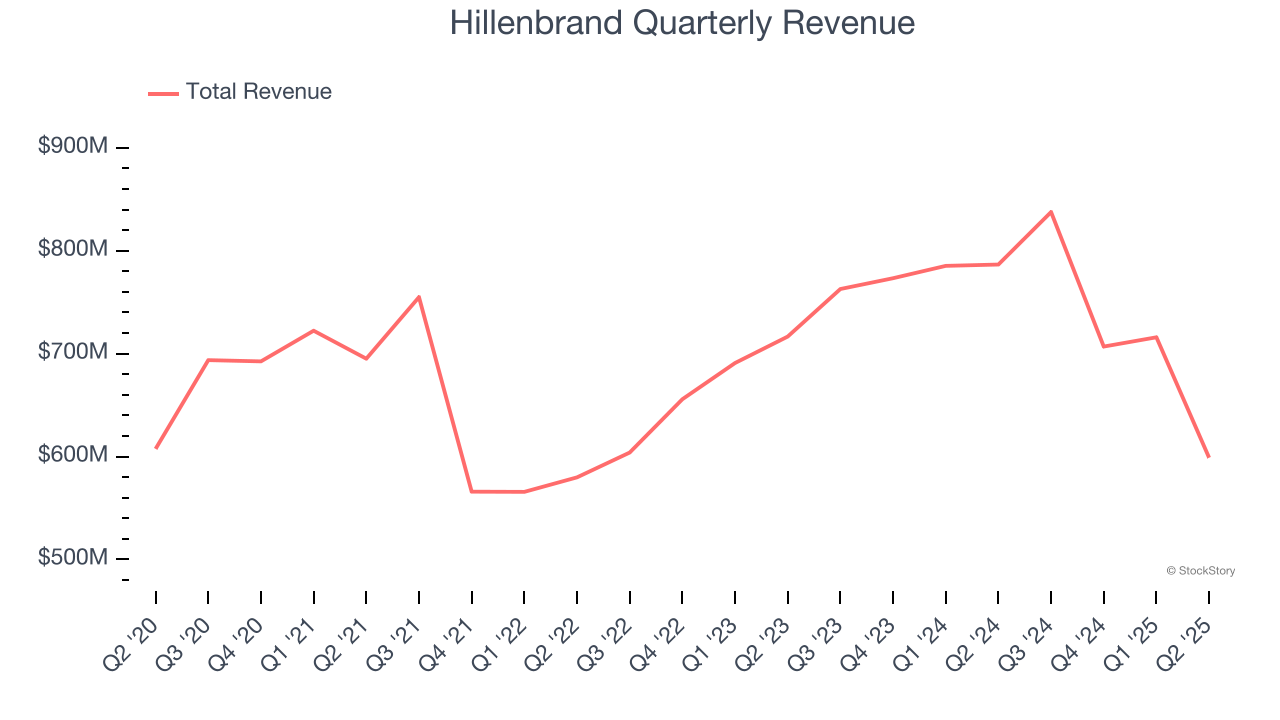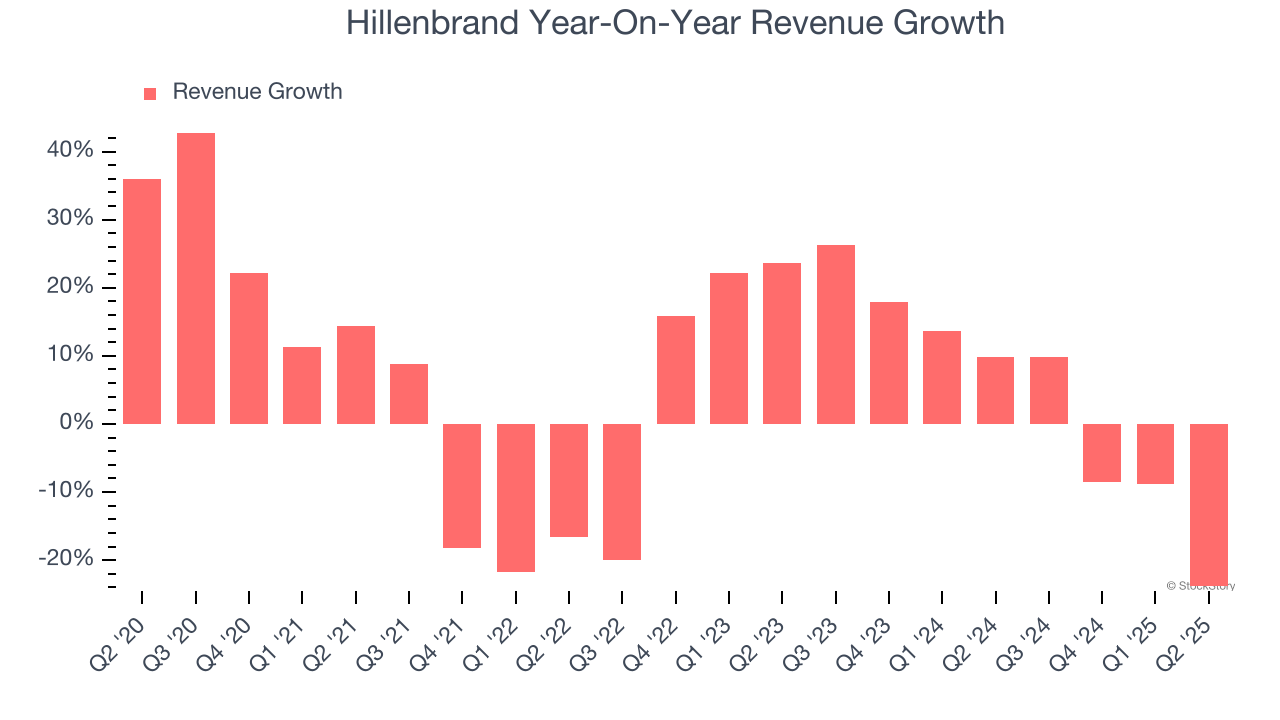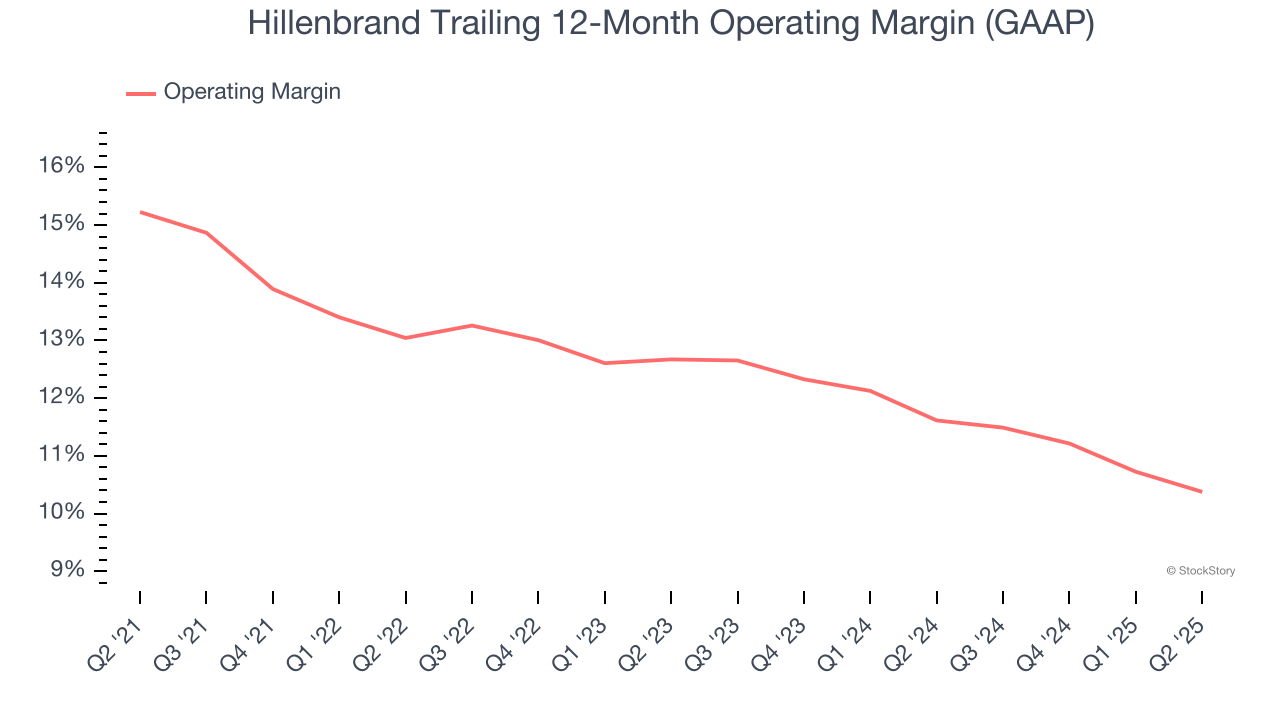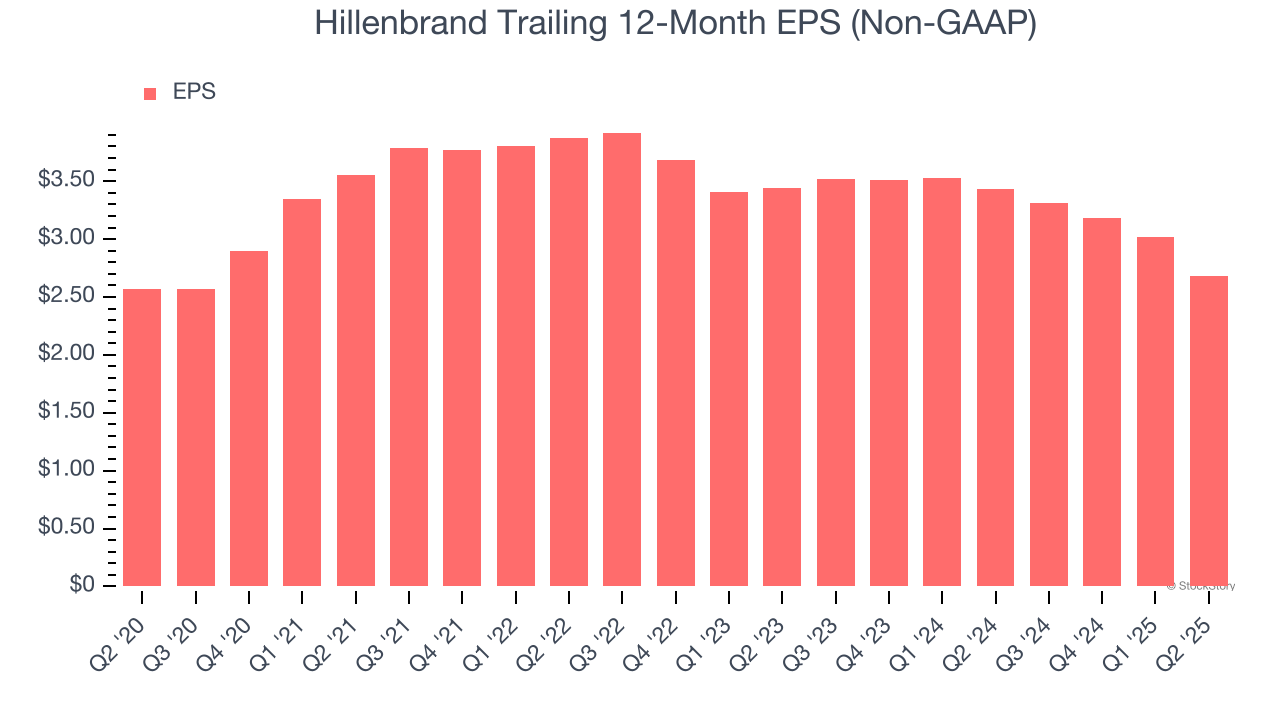
Industrial processing equipment and solutions provider Hillenbrand (NYSE: HI) reported Q2 CY2025 results exceeding the market’s revenue expectations, but sales fell by 23.9% year on year to $598.9 million. The company’s full-year revenue guidance of $2.61 billion at the midpoint came in 1.1% above analysts’ estimates. Its non-GAAP profit of $0.51 per share was 3% above analysts’ consensus estimates.
Is now the time to buy Hillenbrand? Find out by accessing our full research report, it’s free.
Hillenbrand (HI) Q2 CY2025 Highlights:
- Revenue: $598.9 million vs analyst estimates of $572.5 million (23.9% year-on-year decline, 4.6% beat)
- Adjusted EPS: $0.51 vs analyst estimates of $0.50 (3% beat)
- Adjusted EBITDA: $84.3 million vs analyst estimates of $85.44 million (14.1% margin, 1.3% miss)
- The company slightly lifted its revenue guidance for the full year to $2.61 billion at the midpoint from $2.59 billion
- Management reiterated its full-year Adjusted EPS guidance of $2.28 at the midpoint
- EBITDA guidance for the full year is $377.5 million at the midpoint, above analyst estimates of $373.1 million
- Operating Margin: 9.4%, down from 11% in the same quarter last year
- Backlog: $1.62 billion at quarter end
- Market Capitalization: $1.39 billion
"We continued to advance our strategic initiatives this quarter, including refining our portfolio, reducing debt, and advancing the integration and commercial synergy potential of our Food, Health, and Nutrition (FHN) business, despite the ongoing uncertainty stemming from macroeconomic conditions and tariffs. We used proceeds from the MIME divestiture and the sale of our minority interest in TerraSource to reduce debt by over $300 million during the fiscal year. These portfolio moves allow us to focus on our higher margin, higher growth, and higher ROIC businesses serving the performance materials and FHN end markets. Within our FHN business, we recently achieved the $30 million in run-rate cost synergies from the Linxis and FPM acquisitions, and over the last several quarters we are beginning to see the proof points of the combined assets' commercial synergy potential," said Kim Ryan, President and Chief Executive Officer of Hillenbrand.
Company Overview
Hillenbrand, Inc. (NYSE: HI) is an industrial company that designs, manufactures, and sells highly engineered processing equipment and solutions for various industries.
Revenue Growth
Reviewing a company’s long-term sales performance reveals insights into its quality. Any business can experience short-term success, but top-performing ones enjoy sustained growth for years. Regrettably, Hillenbrand’s sales grew at a sluggish 4.4% compounded annual growth rate over the last five years. This was below our standard for the industrials sector and is a tough starting point for our analysis.

We at StockStory place the most emphasis on long-term growth, but within industrials, a half-decade historical view may miss cycles, industry trends, or a company capitalizing on catalysts such as a new contract win or a successful product line. Hillenbrand’s annualized revenue growth of 3.5% over the last two years aligns with its five-year trend, suggesting its demand was consistently weak. 
This quarter, Hillenbrand’s revenue fell by 23.9% year on year to $598.9 million but beat Wall Street’s estimates by 4.6%.
Looking ahead, sell-side analysts expect revenue to decline by 15.5% over the next 12 months, a deceleration versus the last two years. This projection is underwhelming and suggests its products and services will see some demand headwinds.
Today’s young investors won’t have read the timeless lessons in Gorilla Game: Picking Winners In High Technology because it was written more than 20 years ago when Microsoft and Apple were first establishing their supremacy. But if we apply the same principles, then enterprise software stocks leveraging their own generative AI capabilities may well be the Gorillas of the future. So, in that spirit, we are excited to present our Special Free Report on a profitable, fast-growing enterprise software stock that is already riding the automation wave and looking to catch the generative AI next.
Operating Margin
Hillenbrand has been an efficient company over the last five years. It was one of the more profitable businesses in the industrials sector, boasting an average operating margin of 12.5%. This result isn’t too surprising as its gross margin gives it a favorable starting point.
Analyzing the trend in its profitability, Hillenbrand’s operating margin decreased by 4.9 percentage points over the last five years. This raises questions about the company’s expense base because its revenue growth should have given it leverage on its fixed costs, resulting in better economies of scale and profitability.

In Q2, Hillenbrand generated an operating margin profit margin of 9.4%, down 1.6 percentage points year on year. Since Hillenbrand’s operating margin decreased more than its gross margin, we can assume it was less efficient because expenses such as marketing, R&D, and administrative overhead increased.
Earnings Per Share
We track the long-term change in earnings per share (EPS) for the same reason as long-term revenue growth. Compared to revenue, however, EPS highlights whether a company’s growth is profitable.
Hillenbrand’s flat EPS over the last five years was below its 4.4% annualized revenue growth. This tells us the company became less profitable on a per-share basis as it expanded due to non-fundamental factors such as interest expenses and taxes.

We can take a deeper look into Hillenbrand’s earnings to better understand the drivers of its performance. As we mentioned earlier, Hillenbrand’s operating margin declined by 4.9 percentage points over the last five years. This was the most relevant factor (aside from the revenue impact) behind its lower earnings; interest expenses and taxes can also affect EPS but don’t tell us as much about a company’s fundamentals.
Like with revenue, we analyze EPS over a more recent period because it can provide insight into an emerging theme or development for the business.
For Hillenbrand, its two-year annual EPS declines of 11.7% show its recent history was to blame for its underperformance over the last five years. These results were bad no matter how you slice the data.
In Q2, Hillenbrand reported adjusted EPS at $0.51, down from $0.85 in the same quarter last year. Despite falling year on year, this print beat analysts’ estimates by 3%. Over the next 12 months, Wall Street expects Hillenbrand’s full-year EPS of $2.68 to shrink by 10.4%.
Key Takeaways from Hillenbrand’s Q2 Results
We were impressed by how significantly Hillenbrand blew past analysts’ revenue expectations this quarter. We were also glad its full-year EBITDA guidance slightly exceeded Wall Street’s estimates. On the other hand, its EBITDA slightly missed. Overall, we think this was a decent quarter with some key metrics above expectations. The stock traded up 1% to $20 immediately following the results.
Sure, Hillenbrand had a solid quarter, but if we look at the bigger picture, is this stock a buy? The latest quarter does matter, but not nearly as much as longer-term fundamentals and valuation, when deciding if the stock is a buy. We cover that in our actionable full research report which you can read here, it’s free.





